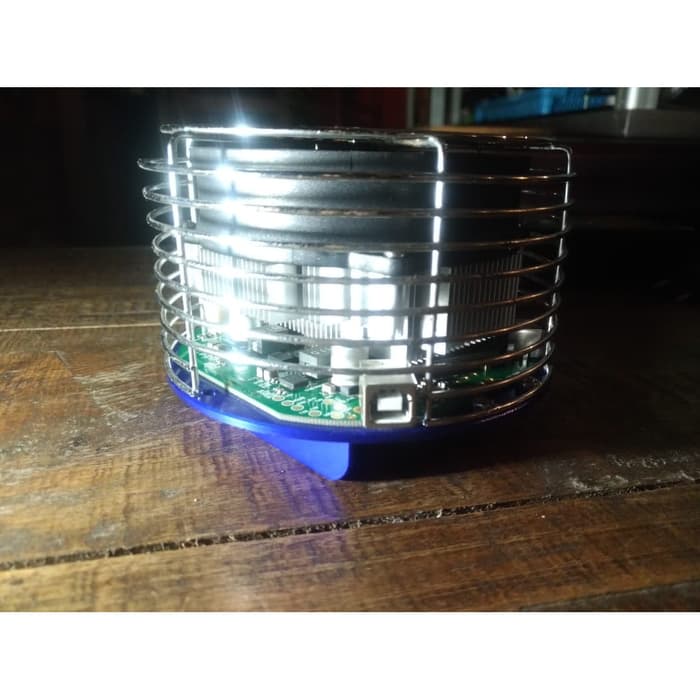
- #Raspberry pi cgminer not finding device install#
- #Raspberry pi cgminer not finding device upgrade#
- #Raspberry pi cgminer not finding device full#
Then from there, you can continue following the compilation according to adafruit which is tar xvf cgminer-3.6.1.tar.bz2Īnd then make a pool. Well, enough time has passed, and I found out that they are up with v3.6.1 which we downloaded.

I was having problems actually reading the data that was coming down from many of the pools and it turned out that cgminer is too old (This is because at the time the suggested 3.1.1 as there were interface issues ASIC mining. I not only did not want to output to screen because I telnet into my Pi and I just use the “screen” command to minimize it in the background whenever I log out. + Logging with 'btc' user will automatically show you the cgminer screen, press CTRL+A then D to go back to shell.
#Raspberry pi cgminer not finding device upgrade#
In 3-4-6 months, I might not only pay for the ASIC block eruptor but the Raspberry Pi itself!įollowing Adafruits entry on bitcoin mining. CGminer only enabled for bitforce, if you want to enable other devices you need to modify compilation option in the /root/Update.sh script then run it to upgrade cgminer. But it’s one more thing for my Pi to do, and who knows. We’re not overly serious about Bitcoin and also are fully aware that the hash rate I am running at is pathetic now that ASIC miners are everywhere. We decided to out my Pi to work on getting me bitcoin currency. Because it runs on a 24/7 basis that means that I’m pissing 3 watts of power non-stop. My Raspberry Pi runs almost 24/7 with some of the projects that we’ve done in the past such as OpenSIM and installing Airplay onto it so that we can send music to the amplifier to my living room and even running some P2P programs to get my latest Linux distros faster. a service) with Part 3 having that process auto-start with the Raspberry Pi.Raspberry Pi with CGMiner making the bitcoins. Part 2 will cover running cgminer as a background process (i.e. That’s it for now, enjoy your bitcoin mining via the Raspberry Pi.
#Raspberry pi cgminer not finding device full#
Remember to replace /path/to/nf with the full path to your custom configuration file. When you have a configuration file to work with, use the below to make cgminer work off the file. That way, next time you load up cgminer, you can begin mining straight away without reconfiguring. Once you are up and running I recommend saving your working configuration to a. cgminerįrom here, cgminer will ask for a URL of a mining pool followed by credentials to authenticate to the pool. If you receive error’s later on regarding issues accessing your USB ASIC then you may need to run cgminer as someone with more permissions via sudo.
#Raspberry pi cgminer not finding device install#
Next, we will clone cgminer from github, configure it for our hardware and finally install it git clone Ĭheck the ASIC Readme for the necessary command to replace YOURASIC and configure cgminer to work with your USB ASIC.Īlright, with cgminer installed, connect up your USB ASIC and open up cgminer. Now, enough of the history lesson and on to the mining.įollow along to setup on your own Raspberry Pi, cgminer, the bitcoin mining application of choice to work along in tandem with USB mining ASIC hardware.īefore we install any software, let’s ensure our repositories are up to date and all installed software up to date apt-get updateįollowed by installing the necessary libraries to work with cgminer + USB mining hardware apt-get install libusb-1.0-0-dev libusb-1.0-0 libcurl4-openssl-dev libncurses5-dev libudev-dev autoconf libtool But that is the beauty of designing a system for a single purpose. They make the CPU and GPU miners of yesteryear look positively wasteful. Small, lightweight, USB Powered and push out around 2.2 GH/s. Take for instance the Bitfury chipset based ASIC miners I currently use.

In the case of Bitcoin, ASIC miners gave users in the GH/s range and doing so without it costing the bank to run. Not a bad jump for those who already had the setup.ĪSIC or Application Specific Integrated Circuits are purpose built circuits. Most miners made the jump from CPU to GPUs (or even multiple GPUs using technology such as Nvidia’s SLI or ATI’s CrossFire) and consequently went from around 150 MH/s to 500 MH/s.

Hell, even the more advanced CPUs like those found in desktops and servers have been found to be inadequate for mining Bitcoins as the difficulty continued to rise. Now the Raspberry Pi itself would be rather useless as a mining device with a humble 700MHz ARM CPU it is not going to break any records. Continuing with my last post’s theme surrounding my recently received Raspberry Pi after the initial configuration, I put it into action by mining Bitcoins with some Aussie USB ASIC miners I purchased of eBay for $36 (for two).


 0 kommentar(er)
0 kommentar(er)
